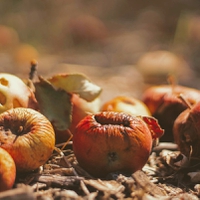19 Jan 2023 — Researchers in the Virginia Tech College of Agriculture and Life Sciences have received a US$2.4 million grant from the US Department of Agriculture to create bioplastics from food waste.
The “first-of-its-kind” pilot project will develop and demonstrate an affordable modular bioprocessing system to produce biodegradable bioplastics from food waste diverted from landfills. The three-year grant will test the scalability and feasibility of the conversion on a national and global scale.
Unlike traditional plastics from petroleum-based materials, bioplastics are made from biological elements such as plant or animal oils and naturally degrade in compost and waterways.
Zhiwu Wang, the principal investigator, predicts 100% biodegradable plastics for the packaging industry.“The preliminary techno-economic analysis and life cycle analysis have revealed the huge cost and greenhouse reduction to be achieved once this technology is full-scale applied. However, these analyses were based on the bench scale data. This pilot scale study will give us a closer-to-truth answer,” Zhiwu Wang, the principal investigator, an assistant professor in the Department of Biological Systems Engineering, and director of the Center for Applied Water Research and Innovation, tells PackagingInsights.
Predicted outcome
Wang is confident about the results of his research stating, “it will prove the cost competitiveness in the market and, in turn, the positive environmental impact of the bioplastics to be produced from this technology.”
If the study proves successful, Wang predicts “the packaging industry will have 100% biodegradable one-time use packaging materials for the food industry to preserve and transport their food products. In turn, both food and packaging industries will have much better public images for their collective efforts to reduce the use of fossil plastics.”
One of the primary targets of the research is finding a way to create bioplastics while keeping the costs as low as possible.
“We will provide a blueprint of how to mass produce biological plastics. We want to make these environmentally sustainable plastics valuable to people, companies, waste management and communities around the globe,” he continues.
Food waste worries
According to Virginia Tech, nearly 40% of food produced in the US ends up in landfills, accounting for the country’s single most significant component of municipal waste. The researchers look to reduce the amount of landfilled food waste and instead turn it into a compostable plastic that serves a higher function than its origins.
The reusability of food waste for bio-based plastic production could help reduce landfill quantity and waste management costs, offset petroleum-based plastic production and pollution and minimize greenhouse gas emissions.
However, the high variability of food waste properties was projected to be a significant challenge. “For that reason, food wastes are categorized into three types based on theirNew research to work on reducing microplastics found in oceans by implementing bioplastics. sources and properties in this study. Accordingly, three separate treatment trains using different technologies will be employed to take care of each type of food waste separately,” Wang explains.
The researchers use microorganisms to consume food waste, allowing them to grow fats – or biological oils. After the microorganisms have sufficient fats, their cells are opened, and the fat is released. After the fat has been purified, it can be processed into bioplastics.
Taking plastic out of the environment
Typically, plastic wrapping materials contaminated by food waste cannot be recycled and must be landfilled together with the food waste. According to the university, this results in greenhouse gas emissions and carries an annual US$165 billion in economic loss from the food, water, energy and chemicals spent in the food supply chain.
“Consequently, more than 67% of end-of-life plastics end up in landfills where they will persist for hundreds of years, not to mention those end up in the ocean and become microplastics.”
Another environmental offshoot of the study is its potential to reduce ocean plastics. The World Wildlife Fund reports that microplastics affect nearly 88% of all marine species. Bioplastics are biodegradable in water, leading to a reduced impact on marine life across the globe.
“It is a known fact that both the consumption and disposal of plastics and food have posed severe environmental issues to our society in terms of economic loss, global warming and environmental justice.”
“Using cutting-edge technologies to close the loop between the two issues, for example., turning food waste into renewable plastics that can be used to preserve food, provides a circular solution to the two big environmental problems that affect everybody’s life in modern society,” Wang concludes.
By Sabine Waldeck
This feature is provided by FoodIngredientsFirst’s sister website, PackagingInsights.
To contact our editorial team please email us at editorial@cnsmedia.com
If you found this article valuable, you may wish to receive our newsletters.
Subscribe now to receive the latest news directly into your inbox.
